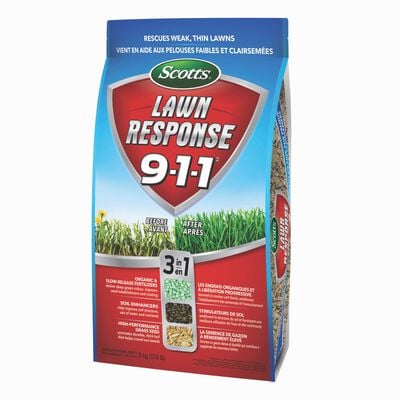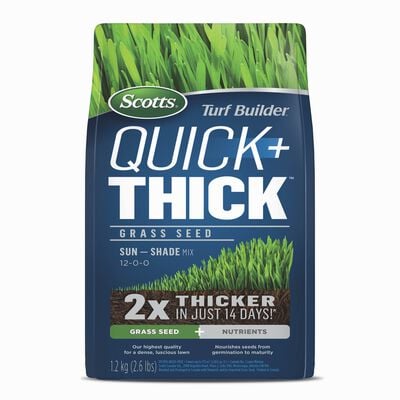
5 Reasons for Thin Grass – and What to Do About It
Why would you settle for less-than-lush grass?
So, you have a vision of an amazing green oasis that's the backdrop to relaxing in your yard. In reality, though, your grass has thin areas that don't live up to your lofty lawn dreams. What could be causing these thin spots? There are several possibilities and, fortunately, they're all relatively simple to address.
Here are 5 common reasons for thin grass and how to handle them:
- Lack of fertilizer. Your lawn needs to be fed in order to look and perform its best.
- Hard or compacted soil. Kids, pets, and general activity can compact your soil over time.
- Too much shade. Over time, trees might have grown up and begun to shade out your grass.
- Disease or insect issues. Grubs or fungal infections could be the culprit for your thin lawn.
- Mowing or watering issues. Your mowing and watering program may need a tune-u
1. Lack of Fertilizer
There's no question about it, grass needs regular fertilizing in order to grow thick, fill in, and stay healthy. And if your lawn needs a little more food than you're currently giving it, areas of thin grass can spread. Don't worry—it's never too late to get back into a good lawn fertilizing routine. Start with Scotts® Lawn Response 9-1-1®. Developed to be used over the entire lawn, it features seed to fill in those annoying gaps, fertilizer to give new and existing grass a good meal, and soil improver to make sure grass roots stay strong and healthy.
2. Hard or Compacted Soil
If your lawn takes a beating with rough-and-tumble activity from kids and pets, your soil can become compacted. Why is that such a big deal? Because when your soil is hard, oxygen, water, and nutrients have trouble getting to your grass' roots, which can lead to a thin lawn. Consider aerating your lawn, which is a process of perforating the lawn with small holes to let water, air, and nutrients pass through. Either before or after aerating, you may also want to apply Scotts® Soil Build'R Spreadable Top Dress For Lawns, which can help both reduce compaction and boost water retention. Cool season grasses should be aerated in the early spring or fall, and warm season grasses in the late spring, so be sure to add that activity to your lawn care calendar.
3. Too Much Shade
As trees grow up over time, your grass can get shaded out, leading to thin patches. When that happens, you have a couple of options: either replace your grass with a more shade-tolerant variety (such as Scotts® Turf Builder Quick + Thick™ Grass Seed Sun - Shade), or go ahead and reseed with the same type of grass you're already growing. If you choose the second option, you'll also want to look into thinning out the tree canopy to allow more sunlight to reach the grass below.
4. Disease or Insect Issues
Grubs and fungal diseases can do a real number on your lawn. Grubs, for example, eat grass roots, causing your lawn to develop thin or bald spots. To prevent grubs in the first place, use Scotts® Grub B Gon® MAX Grub Killer in the spring, summer, and fall.
5. Mowing or Watering Issues
Improper mowing and watering can take a serious toll on your grass. Let's start with mowing: Make sure your mower blade is sharp and that you don't mow too low. Dull blades and scalped grass can lead to stress, which will then serve as invitation to all sorts of pests, diseases, and weeds. Stress can also result from a lack of watering. Aim to water your lawn for about 10 to 15 minutes every other day, depending on conditions and needs. (Download the Scotts My Lawn App to easily track watering the lawn.)
See, that wasn't so bad, was it? Thin spots in the lawn can be frustrating, but they're also fixable. Just follow our easy tips and you'll be on your way to enjoying that thick, emerald carpet you've been dreaming of.


